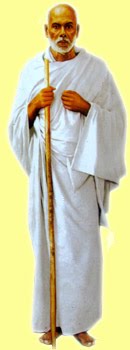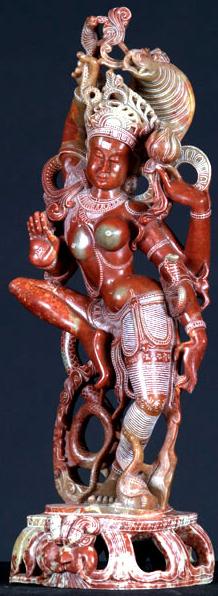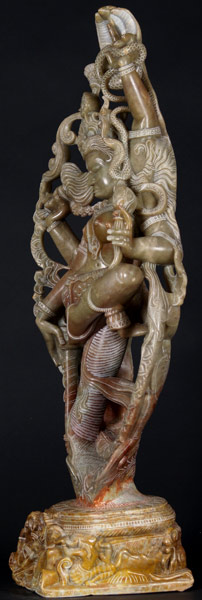| Shiva (Sanskrit: Auspicious One), or Siva, is one of the main Deities of Hinduism, worshipped as the paramount lord by the Saivite sects of India. Shiva is one of the most complex gods of India, embodying seemingly contradictory qualities. He is the destroyer and the restorer, the great ascetic and the symbol of sensuality, the benevolent herdsman of souls and the wrathful avenger. Shiva was originally known as Rudra, a minor deity addressed only three times in the Rig Veda. He gained importance after absorbing some of the characteristics of an earlier fertility god and became Shiva, part of the trinity, or trimurti, with Vishnu and Brahma. |
| He often holds a trident, which represents the Hindu trinity of Brahma, Shiva and Vishnu. It is also said to represent the threefold qualities of nature: creation, preservation and destruction, although preservation is usually attributed to Vishnu. As the destroyer Shiva is dark and terrible, encircled with serpents and a crown of skulls. In the pictures to the right and left Shiva wears sacred Rudraksha beads, perhaps a reference to his earlier name Rudra. |

Shiva saw not sense in the transitory pleasures of life, so he rejected samsara, smeared his body with ash, closed his eyes and performed austerities.
Shiva's tapas generated so much heat that his body transformed into a pillar of fire - a blazing lingam that threatened to destroy the whole world. The gods did not know how to control Shiva's fire.
Suddenly there appeared a yoni - the divine vessel of the mother-goddess. It caught the fiery lingam and contained its heat, thus saving the cosmos from untimely destruction.










